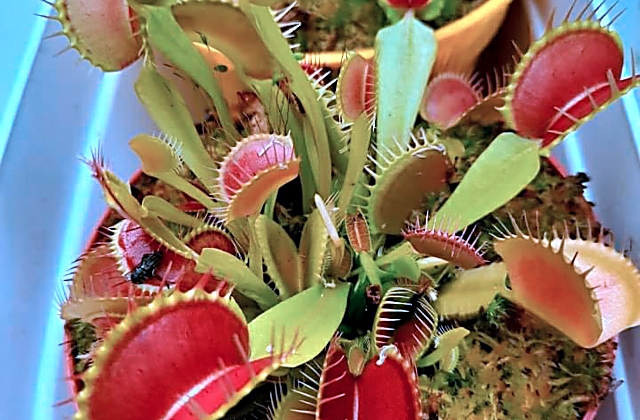Potting Mix For Carnivorous Plants
Soil Requirements For Growing Carnivorous Plants
Globally, carnivorous plants grow well in the moist, sunny, and peaty type of soil condition or environment. Just like all other plants, there will always be variations and exceptions. For example, the Sarracenia purpurea, which is the purple-colored pitcher plant, grows typically in bogs with acidic and peaty soil types. However, some other carnivorous plants thrive well in alkaline sandy conditions too. Mexican Butterworts (Pinguicula spp.) prefers growing in limestone crevices and cliffs, whereas round-leaved Sundew (Drosera rotundifolia) grows well in live sphagnum. So not all carnivorous plants have the same needs and requirements for the soil that they thrived in. Considerations are required for the soil composition and the habitat’s soil diversity within a location where the plants are generally found.

In a bog found in the woodland, though it is in the same single location, there is a different continuum of composition in the soil. For example, sandy and peat can be found within the edges of the woodland, peaty sand that is moist in the mid bog, and soggy peat in the bog center. In the different soil zones within that same bog, carnivorous plants of various types could be found depending on the soil type. However, some that are more tolerant of the soil variations could be found throughout the whole bog.
Main Soil Ingredients For Carnivorous Plants
There are only two main ingredients when it comes to the soil for carnivorous plants. They are sand and peat moss. Not any sand or peat, but washed and cleaned river sand and sphagnum moss. Sphagnum moss, especially those with long fibers, grows in almost every habitat of carnivorous plants. When the sphagnum moss dies, it will become sphagnum peat moss. The sand should be free from all minerals by having it washed thoroughly with clean, flowing water. River sand is also known as horticultural sand. It is not the same as those used in construction, which contain dust, clay, and minerals.

The Ideal Composition Of Soil
It is essential and crucial to note that minerals in the soil can burn the roots of carnivorous plants. So minerals should be avoided in all soil mixes. The general ratio for a mix of sand:peat is 50:50. For those carnivorous plants that have a wider range of soil condition tolerance, this ratio is not that critical. However, for the others, it will make a difference between life or death for those carnivorous plants. That is why we can find different soil mixes for different carnivorous plants in the plant nursery. Each soil mixed has been customized for the individual carnivorous plant requirements. They can do that with the years of success and failure experiences. All these are achieved together with the carnivorous plant field study on their natural habitats globally.